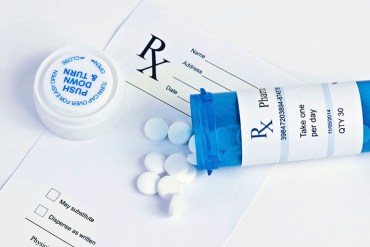Medicare beneficiaries who live in urban areas may save money on their prescription drugs this year because they have better access to pharmacies in drug plan networks that charge lower copayments or coinsurance, according to the federal Centers for Medicare & Medicaid Services.
Such “preferred cost-sharing pharmacies” have been on the rise, adding another layer of calculation — and sometimes confusion — for Medicare beneficiaries who are trying to find the best price for their drugs. In 2016, 85 percent of standalone Medicare drug plans identified a subset of pharmacies that offered lower or “preferred” cost sharing within their pharmacy networks, as did 28 percent of Medicare Advantage drug plans. In 2014, the figures were 70 percent and 15 percent, respectively, CMS said.
Drug plans’ cost-sharing reductions vary depending on their drug formularies and the tiering structure for generic, brand-name and specialty drugs, among other things. For some generic drugs a beneficiary might pay $1 out of pocket at a pharmacy with preferred cost sharing versus $2 at a regular in-network pharmacy. For brand name drugs, the difference in cost sharing could be more substantial, said Colin Shannon, a senior manager at Avalere Health. Someone might be charged 30 percent coinsurance at a preferred cost-sharing pharmacy compared with being on the hook for 40 percent of the cost of the drug at a pharmacy without preferred cost sharing.
“Ten percent of the cost of the drug can make a fairly big difference in beneficiaries’ costs,” Shannon said.
When CMS analyzed the plans that were offered in 2014, it found that while overall most beneficiaries had convenient access to a preferred cost-sharing pharmacy, urban beneficiaries’ access was spottier. On average, 79 percent lived within two miles of a preferred cost-sharing pharmacy, the distance considered convenient in a city. In contrast, 94 percent of suburban beneficiaries lived within five miles of a preferred cost-sharing pharmacy, on average, and an average 88 percent of rural beneficiaries lived within 15 miles of such a pharmacy, reflecting the benchmarks for convenient access in those areas based on population density.

“This was somewhat of a surprise, that the problem was more of an urban problem” than a rural one, said a CMS spokesperson.
Since then, CMS has worked with drug plans to improve access to in-network pharmacies that offer preferred cost-sharing. In a blog post published this week, CMS Deputy Administrator Sean Cavanaugh wrote that access to preferred cost-sharing pharmacies has improved in 2016.
According to CMS, the drug plans that provided the worst access to preferred cost-sharing pharmacies for urban beneficiaries in 2014 did better this year. Specifically, an analysis of the bottom 10 percent of plans found that while 40 percent of urban Medicare beneficiaries in 2014 had convenient access to preferred cost-sharing pharmacies, that figure nearly doubled to 71 percent in 2016.
Although the change is most marked for urban beneficiaries, access improved on average for beneficiaries no matter where they live. In urban areas, 89 percent of beneficiaries have access to a preferred cost-sharing pharmacy within two miles this year, on average, compared with 79 percent in 2014. Among suburban beneficiaries, 97 percent had convenient access this year compared with 94 percent two years ago. Rural beneficiaries’ access to a preferred cost-sharing pharmacy rose from 88 percent in 2014 to 92 percent this year.
“This is something that the agency’s is very focused on,” said Shannon. “They’ve made strides, but definitely there’s still work to be done.”
Please contact Kaiser Health News to send comments or ideas for future topics for the Insuring Your Health column.







